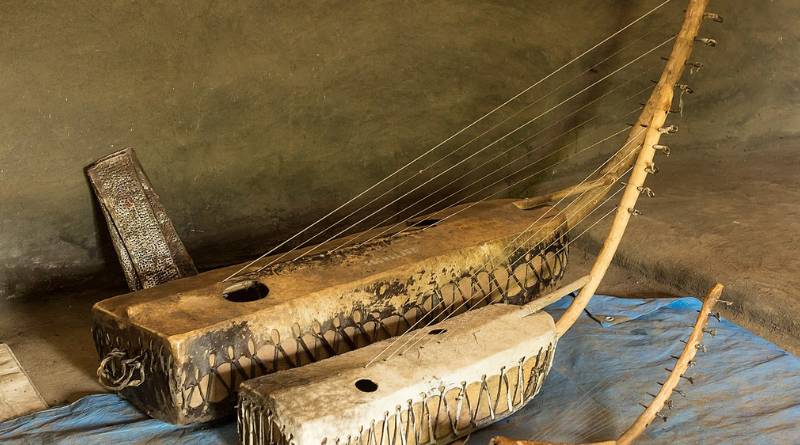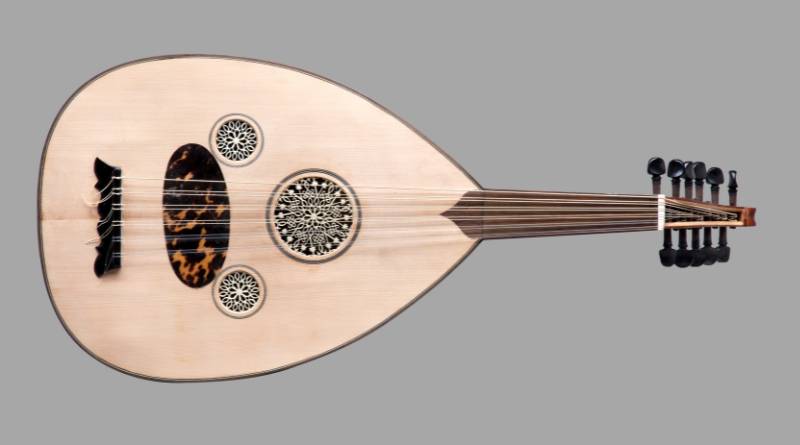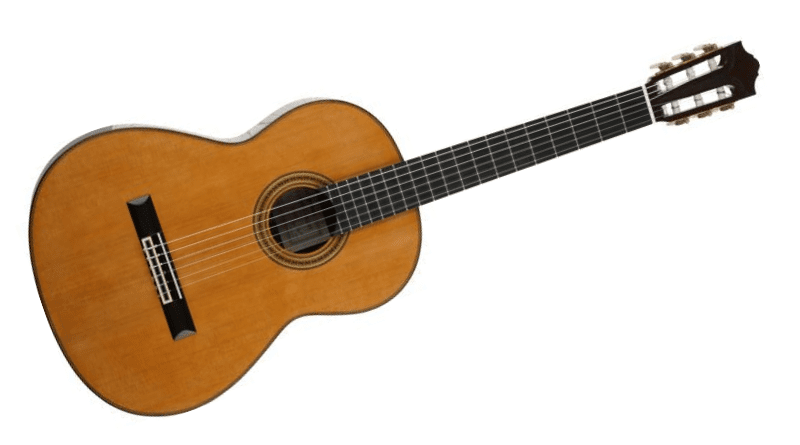The first guitar was developed in the early 16th century in Spain. It originates from the instrument ‘guitarra latina’. It was played using a plectrum and had six single-string courses.
A survey by Fender and YouGov in 2021 determined that around 7 percent of the total population started playing guitar during the pandemic. While it’s not uncommon to have at least one friend in the group who can strum Oasis’ ‘Wonderwall’ effortlessly, have you ever wondered where the guitar came from?
Today, guitars come in many shapes and sizes. Each model has its quirks. So let us dive into the history of the guitar and why it became such a popular musical instrument over the decades:
Contents
Instruments in the Ancient Period

To understand how the modern guitar came around, we need to go back to the period when musical instruments were first invented. While there were some forms of instruments in almost all the ancient civilizations, it is widely believed that the Egyptian and Mesopotamian civilizations had developed a version of a stringed instrument. This resembled an ‘oud’ and historians have traced its origin as far back as 3000BCE in Mesopotamia.
Later, when the Sasanian Empire expanded and annexed places such as Gandhara and Bactria, this instrument became known as ‘barbat’, and eventually, the ‘oud’ came into existence as the barbat merged with the ‘Barbiton’ of Greece.
The oud is a fretless instrument with a pear-shaped body. It has 11 strings and in some instances 10 or even 13. In the later parts of the Ancient period, variations of the oud were found in the Egyptian, Hittite, Chinese, Roman, Indian, etc civilizations.
As the Islamic world collided with the Christian civilizations of the west during the Medieval period, the Muslim Iberia a center of trade, and many musical instruments made their way to European countries such as France and Italy. The oud was one such instrument.
Medieval Period

In the 11th century, the ‘lute’ was developed from the oud. French troubadours and trouvères incorporated this instrument into their music and eventually, the lute was introduced to Spain, Italy, and even the Balkan regions.
During this time ‘lutes’ came in a variety of sizes. A plectrum was used to play them and the strings were set in either four or five courses. They were used as an accompaniment for vocal music during the Renaissance and by the 16th century, they became a popular solo instrument. There were additional modifications made to it and some lutes had six or more courses.
But while the lute gained immense popularity in the 16th century, the ‘vihuela’ was developed in Spain. This is often considered a predecessor to the Baroque guitar. Like a modern-day 12-string guitar, these had six courses and a body with a deep waist.
The Baroque Guitar
These were found in the 16th century. They had five courses for the strings, a wider body, and gradually replaced the lute as the more popular instrument. Most historians agree that these originated in Spain. One would strum the strings of this instrument to play chord progressions.
The Modern Guitar

In the mid-1800s, the modern guitar as we know it today was developed by the Spanish luthier Manuel de Soto y Solares. He was close to Antonio de Torres Jurado who improved upon his design by introducing bracing to the body of a guitar and increasing it in size. These developments affected the projection and volume of the instrument. Jurado is often considered the ‘most important guitar maker’ because the changes he introduced form the basis of the modern guitar.
While the Baroque guitar still exists and is sometimes used in classical music ensembles, this new type of ‘Spanish’ guitar became the norm for acoustic guitars.
Acoustic Guitars
Today, there are 5 main categories of acoustic guitars. They are:
- Steel-string: Often simply called an ‘acoustic’ guitar, these come from the Romantic guitar and the strings are tuned to the standard E-A-D-G-B-E.
- 12-String: These guitars too have steel strings, but unlike other acoustic guitars, they have 12 strings in 6 courses. The two strings in each guitar are played together to add the sound of additional octaves to one’s sound.
- Flat-Top: These have a flat top and a round soundhole. They can be either nylon or steel-string guitars.
- Archtop: These have an ‘f’-shaped soundholes and a curved top. These were invented by Orville Gibson.
- Classical and Flamenco: These have nylon strings and are often used for fingerstyle guitar playing techniques.
Electric Guitars

As Big Band music became increasingly popular in the 1930s, guitar players needed an instrument that could be amplified. Instrument makers started to thus experiment with acoustic guitars and fitted electromagnetic transducers in them so their volumes could be loud enough to be heard over the rest of the band. These became popular among jazz musicians at the time.
In 1931, there were two major developments. Nicknamed the ‘Frying Pan’, the first electric guitar was made available commercially by Paul Barth and George Beauchamp of the National Guitar Association. This was a lap steel string guitar and used horseshoe magnets to act as a pickup. It was made of cast aluminum and had a circular body.
The other significant development was the invention of the first electromagnetic pickup by Beauchamp and Adolph Rickenbacker. This marked the beginning of the single-coil pickups and eventually, humbuckers.
The 1930s also saw the emergence of multiple guitar manufacturers such as Epiphone, Gibson, Vega, AudioVox, etc.
Les Paul is often credited for making the first solid-body electric guitar but many historians also claim that it was O.W. Appleton, whose design in 1941 led to the development of the solid-body.
The Fender Broadcaster and Fender Esquire were the first solid-body electric guitars to be mass manufactured and nowadays many different manufacturers make their versions of electric and acoustic guitars.
Current Trends and Final Thoughts on When Was The Guitar Invented?
Today, guitars come in various shapes and sizes and there is a wide array of options to choose from no matter what your budget. If you are interested in knowing more about guitar sizes and want to explore your options, you can read our guide here.
With rapid development in technology, guitars too have come a long way. We can play them as loud or as soft as we desire, record them, and even manipulate their tone to sound like a completely different instrument.
So no matter what your style of playing or favorite genre of music is, you have the ancient civilizations and the countless innovators to thank for creating such an incredibly powerful musical instrument.


